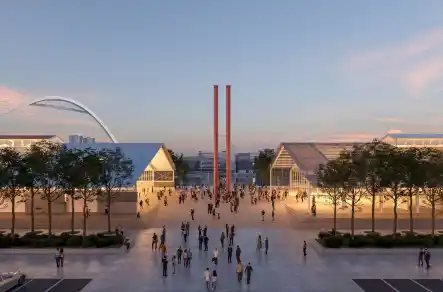Audit Reveals Deep Structural Failures Behind Busan Subway Sinkhole
A 2024 sinkhole in Busan’s subway project was caused by poor soil investigation, failed drainage, and a lack of real-time monitoring, a new audit finds.

BUSAN, South Korea — A massive sinkhole that tore open a construction site for the Sasang–Hadan subway line in Busan in September 2024 has now been officially ruled a preventable engineering disaster. But while a recent government audit details a long list of technical failures that led to the collapse, critics say the official response has focused blame almost exclusively on subcontractors and field engineers—while downplaying systemic shortcomings in planning, oversight, and legal compliance by the city’s own transit authority.
On April 22, 2025, the Busan Metropolitan Government’s Audit Committee released a detailed report identifying the causes and responsibility for the collapse. The incident occurred around 9:00 a.m. on September 21, 2024, following 379 millimeters of intense rainfall. A 12-meter-wide sinkhole appeared at the line’s 2nd worksite near the Nakdong River, forcing emergency evacuation and halting subway construction indefinitely.
While initial reports framed the event as the result of extreme weather, the audit found that hydrological pressure was only the trigger—not the root cause.
The report cited 10 administrative violations, 33 personnel-related disciplinary actions, and demanded a ₩1.159 billion cost deduction from the construction consortium. The audit named improper cutoff grouting, poorly anchored retaining structures, and drainage failure as primary causes. However, the lion’s share of blame in the report’s narrative was directed toward subcontractors and field supervision teams, with only passing reference to the Busan Transportation Corporation (BTC)—the public agency that commissioned and oversaw the project.
Yet the core failure, experts argue, lay further upstream.
Despite the site’s well-documented geological vulnerabilities, excavation began without conducting a mandatory Ground Subsidence Risk Assessment (GSRA). This omission directly violated Article 35, Paragraph 1 of South Korea’s Underground Safety Act, which requires such assessments for any underground construction exceeding 10 meters in depth or located in areas with prior signs of subsidence. Busan’s own 2020 urban geotechnical maps identify the area as highly permeable alluvial soil, and follow-up borehole data revealed NSPT values between 6 and 10, with unconfined shear strength (Cu) below 25 kPa—clear geotechnical indicators of a soft and collapse-prone substrate.
No pre-grouting or soil strengthening was applied ahead of excavation in the area of failure, despite guidelines like KGS-SP-043 requiring multi-row grouting when groundwater head difference exceeds 2 meters. In fact, post-collapse analysis found that piping initiated from one such high-pressure seepage zone, where a sealed connection between the U-shaped open drainage channel and a buried culvert failed under water load.
Adding to the design’s vulnerability, the rainfall that triggered the collapse—though extreme—was not beyond planning parameters. According to K-Water’s 2020 Busan IDF (Intensity-Duration-Frequency) curves, a 100-year storm over 24 hours in this region is expected to deliver approximately 308 mm. The recorded rainfall of 379 mm exceeded this design value by only 1.23 times. In short, the system should have had a buffer—but the infrastructure failed long before reaching its theoretical limits.
No monitoring system was in place to detect early signs of instability. The excavation zone lacked piezometers to measure groundwater pressure, extensometers to monitor soil displacement, or stress gauges to detect retaining wall loading. In a comparable project—Tokyo Metro’s Fukutoshin Line, also constructed through soft sediment—engineers installed one piezometer per 15 meters, two extensometers per cross-section, and connected all readings to a real-time telemetry dashboard that updated every 10 minutes.
In Busan, the failure occurred in silence.
According to construction logs, minor seepage into the excavation shaft was observed by CCTV at 07:42 a.m., yet no automated alerts or thresholds were in place. The collapse occurred at 08:50 a.m., nearly 70 minutes later—a window long enough to halt excavation or evacuate personnel had any sensor been present. Instead, workers were unaware until the retaining wall gave way.
The Sasang–Hadan line had already shown signs of geotechnical instability before the main collapse. Between 2022 and 2024, at least nine minor sinkhole events were documented along the alignment. Residents had submitted complaints. Maintenance crews conducted localized repairs. Yet no systemic review of the ground model or safety procedures was undertaken.
Even the post-collapse penalty has been criticized as insufficient. The ₩1.159 billion deduction represents just 0.7% of the total ₩168 billion contract for the second worksite. That figure, experts note, barely registers as a disincentive—and has not been linked to any structural reform in Busan’s infrastructure planning or monitoring standards.
The audit’s language—while explicit about technical faults—minimizes institutional responsibility. It refers to the Busan Transportation Corporation’s actions in passive voice: the agency “did not sufficiently supervise,” “delayed reporting,” and “did not escalate the matter.” These phrases contrast sharply with the active blame placed on subcontractors who, in many cases, executed designs approved and commissioned by BTC itself.
“This was not just a failure in concrete—it was a failure in accountability,” says Dr. Lim Ji-won, a geotechnical professor at Kyungpook National University. “Field engineers cannot deploy monitoring systems that were never in the plan. If the owner doesn’t mandate or pay for soil reinforcement, you can’t expect subcontractors to guess.”
Legal experts point to the same disconnect. Under Article 4 of the Underground Safety Act, the “project owner” bears the ultimate legal duty to ensure all geotechnical evaluations and monitoring systems are in place before construction begins. Yet that duty, in practice, is easily outsourced—and rarely enforced.
South Korea has recorded more than 2,000 sinkholes since 2014. In dense cities like Seoul, Daegu, and Busan, underground development is colliding with old drainage systems, weak soils, and aging utilities. While local governments increasingly rely on GPR (Ground-Penetrating Radar) and mapping tools, these datasets are often kept private. Busan city, for instance, maintains a detailed subsidence hazard map—but refuses to release it publicly, citing concerns about property values and public “panic.”
As underground urbanization accelerates, the Busan subway collapse offers a cautionary tale: technical standards alone are not enough. Without systems that align legal accountability, engineering diligence, and real-time risk detection, even the most advanced infrastructure can rest on uncertain ground.
“The earth failed, yes—but the bigger failure was man-made.”



Comments ()